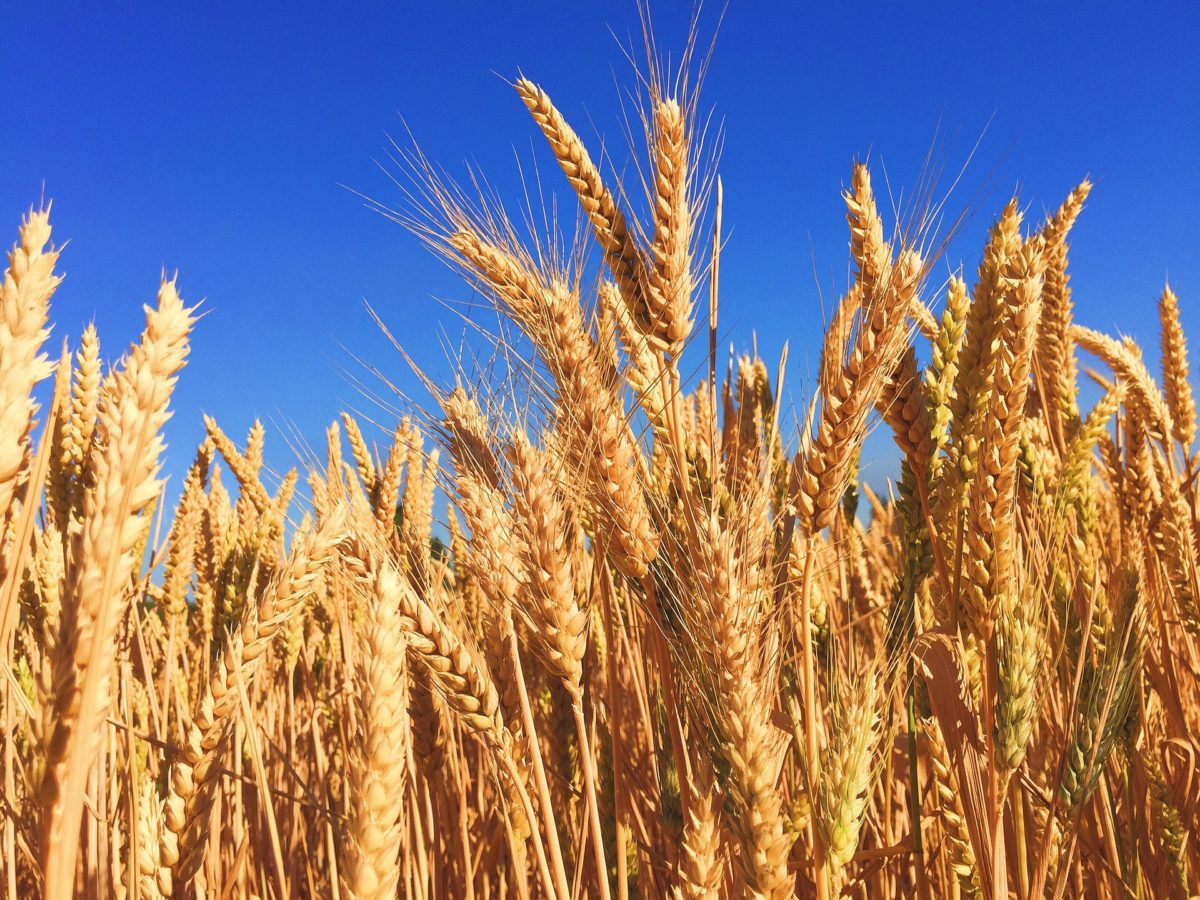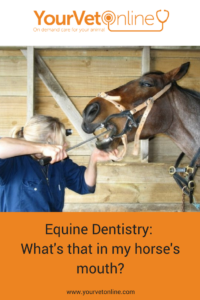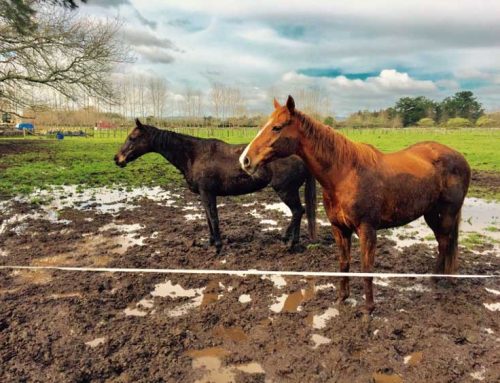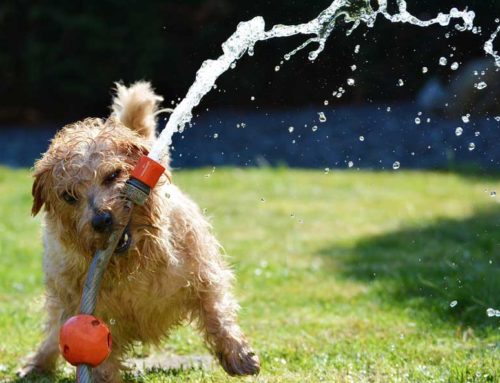How A Vet Dentist Examines A Painful Horse’s Mouth
Many signs of equine dental problems are subtle and easily missed by owners and trainers.
While regular horse mouth exams are recommended, there are times when the signs of mouth pain are not so subtle and you need your horse looked at sooner than later.
In this article, equine dental vet Dr Shannon Lee describes the common problems he finds when examining horse mouths and some of the ways you can prevent problems yourself.

Little surprises me when it comes to equine dentistry and what I might find in a horse’s mouth!
It seems that horses, being by nature an animal that is both curious and cautious, are often prone to both oral injury and ingestion of foreign objects.
More often than not, there are little or no outward signs of there being any problem, and we are oblivious to what is going on.
Here is a shortlist of just a few items that are very common to find during a routine equine dentistry examination:
- Wood and sticks
- Wire
- Rubber
- Plastic
- Plant seeds
Signs Of A Problem With My Horse’s Teeth
Many times our horses show very few signs that there might be a problem with their mouth or teeth. It’s up to us to recognise abnormal behaviour such as:
- discomfort or depression
- visible facial swelling
- drooling or dropping food
- attempting to wash out their mouths
- making awkward or unusual facial expressions, especially when eating
- throwing head while riding
- resisting contact with the bit, reluctance to turn in a certain direction
What To Do If You Suspect Your Horse Has A Sore Mouth?
Taking care not to get hurt, you can try to make your horse more comfortable by rinsing their mouth with clean water from a garden hose.
It is very difficult to thoroughly clean a horse’s mouth and to thoroughly examine it without a gag and adequate lighting.
To diagnose the problem and provide treatment will require further investigation by your veterinarian.
Most horses will require sedation to perform an adequate examination.
How To Prevent Disease And Pain In Your Horse’s Mouth?
The old adage that prevention is better than cure rings true with our horse’s mouth too.
To minimise pain and disease in your horse’s mouth there are some key things you need to do and also to avoid.
What To Feed My Horse?
Horses love to eat and nibble on items that they shouldn’t.
Take the time to look around your property and think critically about the environment and how you manage it.
Simple steps like cleaning up rubbish, controlling weeds, and maintaining fencing are logical places to begin.
Take the time to look carefully at the food you are providing your horses. With hay and chaff, a simple tip is to scoop some into your hand, smell it and feel it.
- Does it feel damp?
- Is it mouldy?
- Does it contain seed heads that cut or hurt you?

Barley grass can cause damage to the soft delicate tissue of your horse’s mouth.
A very common cause of oral trauma in horses comes from weed seeds in hay and chaff.
An example in Australia is Barley grass (Hordeum glaucum and H. leporinum).
Most horses suffering from this type of problem will show no outward signs so, for example, when each winter I am called to see horses that are showing problem signs, such as drooling, I take the time to explain to the property owner that other horses getting the same feed will also be experiencing similar issues (they might just be better at disguising it).
Feeding horses is relatively expensive so it can be frustrating to learn that the hay that you have purchased is not good for horses.
The temptation is to feed it until it has been used up or to feed it to other horses or other species like sheep or cattle. In many areas, hay that does not contain a significant number of these seeds can be very difficult to come by.
The take-home message is to check your feed… seed heads such as Barley grass cause serious trauma and should not be fed to horses.
Some of the other items on our list can be much harder to avoid and, unfortunately, will often also result in no outward sign of a problem.
One thing that you might be surprised by is just how far a horse’s jaw (and tongue) moves during chewing. This means that when a horse ingests an object and then finds it difficult to spit it back out, or when an object becomes lodged in tissues such as the tongue, the area covered with each chew (and exposed to damage from the offending item) is quite large and can cause trauma and injury to a large region of the mouth.
Use An Equine Vet Dentist
Trying to find the offending piece of wood, metal or plastic can be difficult. This is because:
- A horse’s mouth is a long tube that can only be examined from the front.
- Items can quickly be driven inside tissues like the tongue, making them very difficult to see or feel
- When looking for foreign items we will search carefully around the mouth, under the tongue, in the cheeks, etc using a bright light, mirrors, and probes; with our fingers (which are especially sensitive at detecting the tips of sharp objects and at identifying thickening due to scar tissue formation), cameras, X-rays and even ultrasound.
The key to diagnosing your horse’s mouth problem is utilising an equine vet dentist who has all the equipment required to find the offending problem.
Complications From Foreign Objects Getting Lodged In The Mouth
Infection following ingestion of these items is quite common, especially with items made of organic material such as wood or seeds.
There is also the risk of developing conditions such as tetanus.
Usually, once the item or ‘foreign body’ is located and removed it’s the end of the problem, but not always.
For example, in the case of sticks wedged across the roof of the mouth (a reasonably common problem), if the stick has spent any amount of time in the mouth before being discovered and removed (the most common scenario with this type of problem), then the tissues around each end of the stick will have begun to breakdown as a result of the buildup of bacteria on trapped feed.
In these cases, removing the stick will provide the horse with relief, but they are likely to be left with ongoing problems due to the changes caused to the surrounding gum and bone.
If the injury or infection has happened in an animal whose immune system is compromised i.e. in a horse with Cushing’s disease (hyperadrenocorticism), they will generally be unable to cope with or repair the damage or fight off the infection unless they are also receiving medical treatment for their Cushings.
Trauma To A Horse Mouth And Teeth
As we discussed at the beginning of this article, horses are both curious and cautious and, as a result, injuries related to exploring their environment with their mouths, fighting, falling etc, are also very common findings.
Common injuries include
- ‘Pull back’ injuries to front teeth
- Jaw fractures
- Broken or missing teeth
How each injury is managed is quite specific and is also related to how long it’s been since the trauma occurred, the age of the animal, the owner’s budget, and so on.
To give you some idea of just how common these types of injuries are we deal with them almost every day.
Many people struggle to understand that a horse with a fractured jaw will most likely keep eating and show little to no outward sign of a problem.
These types of injuries are usually easily managed, however, it’s very important to get the right advice about how to achieve that and to understand that injuries of this nature can have long-term side effects requiring ongoing care.
Part of the reason that horses have long-term side effects from dental injuries is because of the structure of horses’ teeth and how they differ from those of people.
Horses have a hypsodont tooth (meaning the tooth continues to erupt as it is worn down by chewing), so when a horse has sustained an injury resulting in a missing tooth or malaligned teeth, the remaining teeth will wear unevenly over time.
These overgrowths require management and sometimes correction by your dental veterinarian, and this must be done with skill and care as each tooth contains sensitive nerves that, if damaged, will lead to pain, infection and the need for complicated tooth extractions.
Growths And Cancer
We have looked briefly at what your horse might put in its mouth and how it might damage or injure itself, but the mouth is also a very large collection of tiny cells all undergoing a cycle of generation, degeneration, and death. Cells that become cancerous have one or more faulty genes.
Tumours of the mouth (including teeth) and surrounding bone of horses are not that uncommon.
There are many types and the prognosis (likely outcome) depends heavily on what type, where it is located, and how quickly it is identified.
Some are benign, others malignant.
What Can Grow In My Horse’s Mouth?
We’ve talked about what can go into mouths, how mouths can be injured, and what can grow in mouths but, what about what can live in mouths?
People are sometimes concerned about horses’ mouths being dirty or breeding grounds for bacteria, however, in a healthy, balanced and stable environment the horse’s mouth is quite a clean place.
It’s only when things go wrong that we see the introduction or overgrowth of particular bacteria types.
Interestingly, in a recent study, researchers demonstrated that there were significant differences in the bacterial populations in the mouths of ‘healthy’ horses and those with periodontal disease.
Whilst many different bacteria live in the oral cavity, the study found that two main genera dominated the results for healthy horses: Gemella and Actinobacillus, whilst the samples from the periodontally affected group were dominated by the genera Prevotella and
Veillonella.
Within the mouths of the study population, 107 taxa or species of bacteria were identified, with other potentially novel bacteria yet to be identified¹.
Over the past 100 years, many studies have demonstrated that a very high percentage of the horse population (figures of 65-70% have been repeatedly demonstrated) are affected by periodontal disease.
Another unusual living organism found in horses’ mouths is the larval stage of the Bot Fly (Gastrophilus intestinalis).
The botfly undergoes part of its lifecycle in the mouth, burrowing into the horse’s gums where they mature before leaving and migrating to the back of the mouth to be swallowed.
This occurs during a particular time of the year and affected horses are left with deep bleeding pockets (periodontal pockets). These are the same types of pockets described and examined in the study mentioned above, so you can see how the pockets and the changes in bacterial flora associated with them are a problem.
If you are concerned that your horse might be one of the three out of every four horses that suffer from periodontal disease, seek advice from an equine dental vet.
Early detection, the right advice, and correct treatment and management are the keys to a successful resolution.
Does My Horse Need Dental Xrays?
Dental X-rays have formed the backbone of dental exams and diagnostics for many decades. X-rays are very useful in providing detailed information about both the structure of teeth and bone and the presence of disease.
Equine dental X-rays are something you might want to discuss with your dental veterinarian at your horse’s next dental visit. Digital technology makes it easy to send and share x-rays, so it is also now much easier for you and your veterinarian to access the knowledge base of referral dental and surgical veterinarians.
Getting good advice early and seeking the appropriate treatment is the key to success.
Other very useful tools for assessing and examining what’s in these mouths in areas that cannot be seen from an oral exam include MRI (magnetic resonance imaging) and CT (Computed Tomography).
These are available in some Australian (and US) equine hospitals.
In Conclusion
In summary, we’ve briefly looked at and talked about what could be in our horse’s mouths… And we didn’t even really talk about teeth.
As you can see there’s a lot to talk about and it is one of the reasons dental disease and the study of dental disease in horses is so complex and ever-changing.
By Dr Shannon Lee BVSc MANZCVSc DICEVO






Leave A Comment